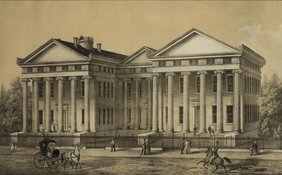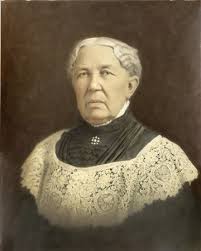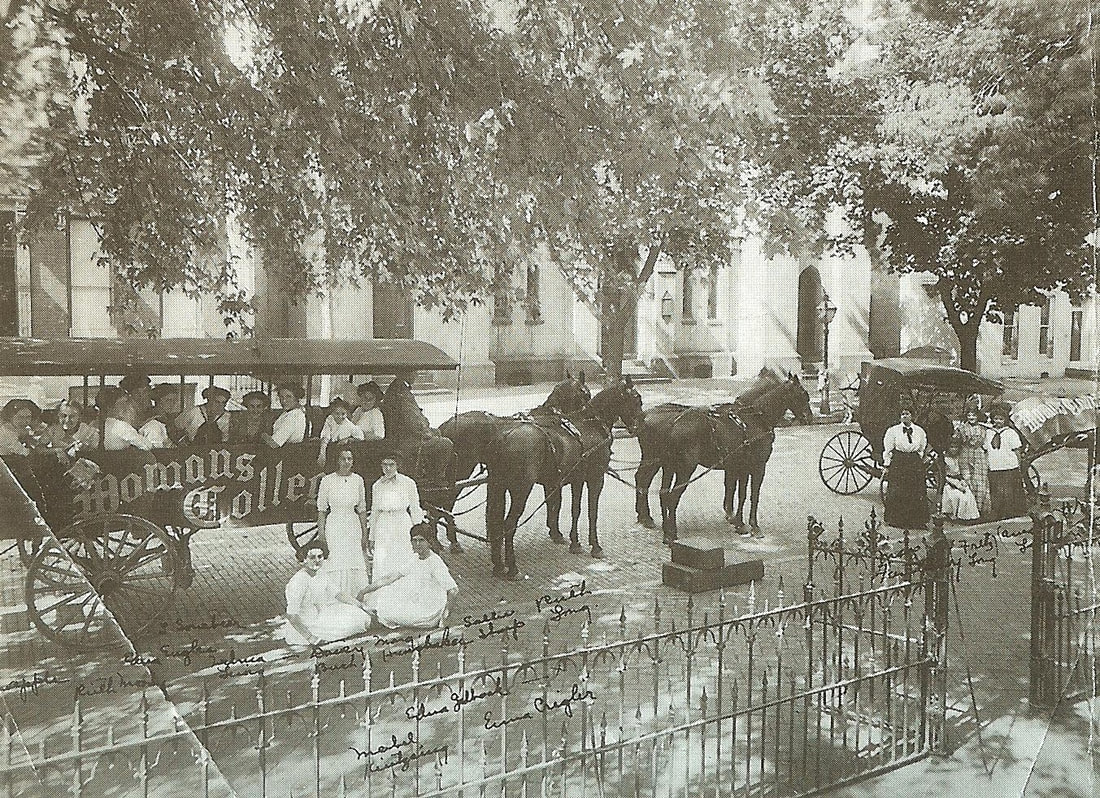|
I was talking to an elderly gentleman in his nineties the other day, and I had to smile when he referred to some local youths responsible for vandalism to his car as “a few bad apples." I had not heard this throwback expression in a while, one comparable to the legendary “good-for-nothings” and “ne’er do wells.” I still revel when seeing any of these in print while conducting research work in old newspaper stacks and microfilm. The collective moniker (“A few bad apples") usually comes about when mayhem and misconduct rears its ugly head, and one chooses not to blame the larger group for the ill-intensions of a subset of said group or organization. The saying is rooted in ancient times, and its comparison between humans and apples is a welcomed break from the overused comparison apples to oranges. The literal meaning of the proverb comes from the message that one shouldn’t throw out a basket, bushel or barrel of apples, just because a few appear to be bad or rotten. Benjamin Franklin, however, muddied the waters with his charge of “guilt by association” as he popularized the expression "the rotten apple spoils his companion," a line credited to William Shakespeare where he used the expression “rotten apples” to signify “bad companions” (“Taming of the Shrew”). And then there are the Osmonds with their 1970 apple-oriented hit, but I don’t think we need to go there.  An apple atop the Apple family plot in Frederick's Mount Olivet Cemetery An apple atop the Apple family plot in Frederick's Mount Olivet Cemetery On the other hand, we also have another popular saying that puts emphasis on the good apples, not the bad. The old Welsh proverb reads: “An apple a day keeps the doctor away.” Its message provides the sage advice that eating fresh fruits and vegetable will provide one a healthier life. The expression dates to the 1860’s where it was originally spoken as “Eat an apple on going to bed, and you’ll keep the doctor from earning his bread.” Apparently the shortened version arose in print in the early 20th century, 1913 to be exact, based on the first published findings of this phrase. It’s only fitting that here in Frederick, in that same year of 1913, one could find in print a nice “conjugation” of the featured fruit and professional calling found in the fore-mentioned proverb. Yes, indeed, we had our own “Dr. Apple,” and he was creating something extremely special on the northwest side of town. He, my friends, was a very good apple.  The Frederick Female Seminary The Frederick Female Seminary Dr. Joseph Henry Apple first came to our fair town in 1893. His sole purpose—employment. A few weeks back, we featured a story on Professor William Von Steinman, a beloved former music teacher at the Frederick Female Seminary, one of the foremost and progressive education facilities for women in the country during the 19th century. The school was located within Winchester Hall, our seat of county government today, taking its name from the school’s original founder, Hiram Winchester. Winchester served as principal here from 1843-1863, at which time the school closed due to the American Civil War. The seminary re-opened in 1865 under a new leader, Thomas McMullen Cann, who remained here until 1873. In my Von Steinman piece, I made mention of the school’s next two principals, the husband and wife team of James H. Hackleton (principal from 1873-1877) and his wife Maria Hackleton (serving from 1877-1885). Mrs. Hackleton eventually moved to South Carolina to be closer to her daughters, opening the door for the last individual to hold the title of principal of the Frederick Female Seminary. This was Dr. William Purnell who served in this capacity until 1893. A “healthy” change came with Dr. Apple in the summer of 1893. It was at this time that the Potomac Synod of the Reformed Church of the United States was looking for a girls’ school in the local area to end the co-educational status of its Mercersburg College in Pennsylvania. The Synod had already received four other proposals for a women’s college located south of the Mason-Dixon Line when the board of trustees of the Frederick Female Seminary offered up the facilities at Winchester Hall to the religious group. An arrangement was made with the Potomac Synod to lease the school’s property here in Frederick, which now ceased to operate as a separate school. The Reformed Church Synod appointed a board of directors which, in turn, created the Woman’s College of Frederick. The first term of the exciting venture commenced with 112 students in September 1893 under the leadership of Dr. Apple’s administrative staff of fourteen. The new educator from Pennsylvania would be at the helm for the following 40 September academic year launches. Midway through Dr. Apple’s epic tenure, the Woman’s College would expand greatly, gaining a spacious new location to call home and a name change to Hood College. These results should be credited to Dr. Apple as much as they are to namesake benefactress Margaret Elizabeth Scholl Hood. Joseph Henry Apple Many others have written fine pieces on the tremendous achievements and life contributions of Dr. Joseph H. Apple. I, however, will shed some light on his death and burial here in Mount Olivet. But first, here’s the happy stuff in the form of a biography taken from Hood College’s website: "Joseph Henry Apple was born in Rimersburg, Pennsylvania, in 1865, the youngest son of Elizabeth Geiger and Joseph Henry Apple, a teacher and minister. An 1885 graduate of Franklin and Marshall College, he was called to be the President of the Woman’s College of Frederick in May of 1893 from Pittsburgh Central High School where he was enjoying a successful teaching career. Encouraged by his first wife, Mary Rankin Apple, to heed the call, Dr. Apple was to stay in Frederick and serve as president of the College for the ensuing 41 years. Upon his retirement in 1934, he was the oldest living college president in continuous active service at a single institution in the United States. Dr. Apple dedicated his life to the work of establishing the campus at its current location, constructing fourteen buildings and setting the high standards for academic excellence that continue to this day. A man of great vision and high purpose, he was noted for his persistence, dauntless determination and natural leadership ability. During his tenure, Hood grew from a small female seminary with an uncertain future to a campus of 125 acres, 14 buildings, 27 administrative staff, 57 faculty, and 500 students. He awarded diplomas to 1,591 students during his presidency. Not only did Dr. Apple give his life to Hood College, but so did the members of his family. Miriam Rankin Apple, the daughter of Dr. Apple and his first wife, graduated from Hood in 1914. She served as librarian in the library that bears her father’s name from 1914 to 1950, with the exception of a two-year leave of absence. Born in 1893, her life span coincided with the early life span of the College. She was noted in her grace, charm, and friendly disposition. The Miriam Apple Memorial Room in the library is dedicated to her memory and houses the archival treasures of the College. A second daughter, Charlotte, died as a child. Mary Rankin Apple died in 1896. In 1898 Dr. Apple married his second wife, Gertrude Harner Apple, who was employed by the College as an English instructor and is credited with establishing Hood’s literary magazine, The Herald. Additionally, Mrs. Apple was responsible for supervising the planting of many of the original trees, shrubs, and flowers which contribute to the extraordinary beauty of Hood’s campus. Gertrude and Joseph Henry Apple had three children. Two daughters: Elizabeth Apple McCain ’23 and Emily Apple Payne ’24, and a son, Joseph Henry Apple, Jr. The dedication of the Apple family to the life and work of the College is unparalleled. We owe much to this family. Their courage, vision, leadership, dedication, and commitment have resulted in a lasting legacy."  Margaret E. S. Hood (1833-1913) Margaret E. S. Hood (1833-1913) In his first year on the job, Dr. Apple properly, and professionally, built a relationship of trust with Margaret Elizabeth Scholl Hood, a former student of the Frederick Female Seminary (1847-1849). It was in 1893 that Mrs. Hood would put her faith (and money) in Dr. Apple’s leadership abilities by creating a $25,000 endowment in the name of her late husband, James Mifflin Hood. Years later, she would be invited by Dr. Apple to live at the school. He certainly made Mrs. Hood feel at home, becoming more than just an alumnus, but actually part of the institution itself. So much so, she would return the favor. In her will, she made arrangements to donate property (formerly known as Groff Park) and give an additional $30,000, which would be the impetus for President Joseph Henry Apple to begin building Shriner Hall and Alumnae Hall. In light of her many contributions, Dr. Apple led the charge to have the school’s charter amended to change the name of the Woman’s College of Frederick to Hood College. This occurred in October, 1912. Mrs. Hood would pass a few short months later on January 13th, 1913. As it was Mrs. Hood who gave her money and name to the institution for higher learning, it was Joseph Henry Apple who actually built it. The new campus opened in 1915, and the rest, as they say, is history.
 Dr. J. H. Apple (1865-1948) Dr. J. H. Apple (1865-1948) Dr. Apple was likely keenly aware of the 35th anniversary of his dear friend Mrs. Hood’s death on January 13th, 1948. At this time, he had been ill for a number of months. His own final bell would toll just four days later on Saturday, January 17th, 1948. Dr. Apple died at home, across the street from Hood's main entrance off Rosemont Avenue. The college and Frederick had lost Joseph Henry Apple at the age of 82. The local papers carried Dr. Apple’s obituary, along with several glowing tributes from community leaders and former students (I've included his obit at end of the story). The longtime educator had requested to be buried in his academic robe. January 20th was the day of the funeral. After a service at Brodbeck Hall, the original building of Hood’s new campus, the good doctor’s body would be laid to rest in Mount Olivet's Area CC, Lot 27. The family burial lot had been purchased two years earlier, and the remains of daughter Charlotte Apple had been relocated here from her original burial spot in Area L, found in the older section of the cemetery. I found that Charlotte had died in 1902 of diphtheria at the tender age of seven. Sadly, over the next decade, Dr. Apple would be joined by his daughter Miriam (1950), wife Gertrude (1953) and son Joseph, Jr. the latter dying as a result of a heart attack at age 48. Another one of Dr. Apple’s would be buried in the family plot in 1996, Emily Apple Payne. This one, good apple certainly made Frederick a healthier and better place, and Mount Olivet is proud to have people of his magnitude within its gates. Hood College is equally proud, celebrating its 125th anniversary in 2018.  Frederick News (Oct 28, 1929) Frederick News (Oct 28, 1929) In my research, I found yet another ironic and mystical connection. Dr. Apple’s remaining daughter, Elizabeth Apple, would marry Pittsburgh native Russell H. McCain in 1926. Russell was raised by his uncle, Elmer D. McCain, and the family came from western Pennsylvania in that pivotal year of 1913, the year Dr. Apple began Hood College. The McCains located west of Frederick along the National Pike (US 40) and started a farm operation that would take their name—McCain Orchards. And their specialty product was....you guessed it, apples! Later the name was changed to Hillcrest Orchards. The fruit trees are gone today, but one can still enjoy a tasty slice of pie or apple cheesecake at the Mountain View Diner or an apple-crisp sundae at Roy Rogers located adjacent McCain Drive—once serving as the farm lane that bisected the property .
2 Comments
Nancy Droneburg
1/21/2018 01:16:38 pm
what is the web site for the veterans buried at Mt. Olivet that you started. I can't seem to find it.
Reply
Chris Haugh
1/22/2018 09:58:23 am
Hi Nancy, the MOC veterans website address is : www.mountolivetvets.com
Reply
Leave a Reply. |
STORIES
|
Archives
July 2024
June 2024
May 2024
April 2024
March 2024
February 2024
January 2024
December 2023
November 2023
September 2023
August 2023
July 2023
June 2023
May 2023
April 2023
March 2023
February 2023
January 2023
December 2022
November 2022
October 2022
September 2022
August 2022
July 2022
June 2022
May 2022
April 2022
March 2022
February 2022
January 2022
December 2021
November 2021
October 2021
September 2021
August 2021
July 2021
June 2021
May 2021
April 2021
March 2021
February 2021
January 2021
December 2020
November 2020
October 2020
September 2020
August 2020
July 2020
June 2020
May 2020
April 2020
March 2020
February 2020
January 2020
December 2019
November 2019
October 2019
September 2019
August 2019
July 2019
June 2019
May 2019
April 2019
March 2019
February 2019
January 2019
December 2018
November 2018
October 2018
September 2018
August 2018
July 2018
June 2018
May 2018
April 2018
March 2018
February 2018
January 2018
December 2017
November 2017
October 2017
September 2017
August 2017
July 2017
June 2017
May 2017
April 2017
March 2017
February 2017
January 2017
December 2016
November 2016
























 RSS Feed
RSS Feed